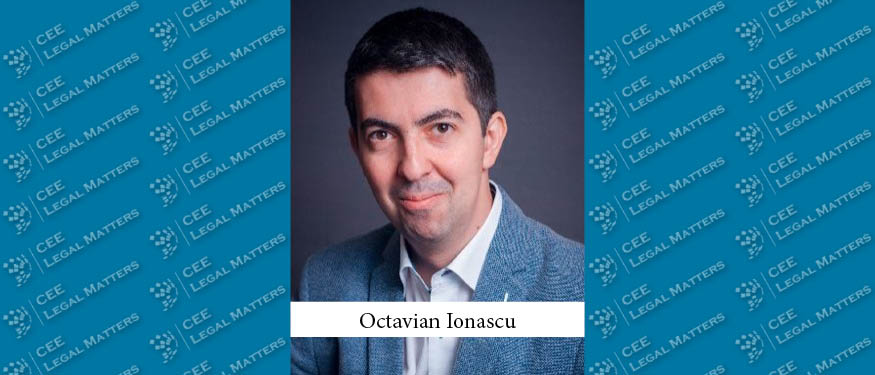On February 29, 2024, energy experts from Bulgaria, Croatia, Moldova, Turkiye, and Ukraine sat down for a virtual round table moderated by CEE Legal Matters Managing Editor Radu Cotarcea to discuss the key developments in the field of oil & gas over the past few years.
Round Table Participants:
- Dmytro Fedoruk, Partner, Redcliffe Partners
- Kostadin Sirleshtov, Managing Partner, CMS
- Marin Curic, Senior Associate, Marohnic, Tomek & Gjoic
- Sorin Dolea, Managing Partner, Dolea & Co
- Zahide Altunbas Sancak, Partner, Guleryuz Partners
CEELM: Let’s start with the elephant in the room: The words “energy” and “crisis” have been going hand in hand for the last couple of years. In your jurisdiction, to what extent is the energy crisis behind us?
Fedoruk: As you are aware, there has been a significant escalation in military attacks on Ukraine’s energy infrastructure during the past two winters. With investments from multiple donors and the private sector, along with extensive campaigns in the country’s history, the government has intensified passive defense measures to safeguard energy sources. However, approximately 50% of the energy infrastructure has suffered damage, leading to a slowdown in the country’s economy and a decrease in oil & gas consumption. Notably, around 70% of wind farms are situated in territories now occupied, including the Zaporizhzhia region.
Initially, Russia targeted energy facilities, seizing the Zaporizhzhia nuclear power plant, disconnecting the energy grid, and occupying over 60% of coal and gas deposits. In response, the government swiftly prohibited natural gas exports to ensure sufficient reserves within the country. Efforts were also made to bolster domestic production and integrate Ukraine’s power grid with the European network, resulting in enhanced security, both militarily and within energy systems. Nevertheless, the situation remains chaotic, with the government striving to ensure the sustainability of energy systems amidst ongoing challenges.
Sirleshtov: As for Bulgaria, if we define the energy crisis by the increased prices of oil, gas, and electricity from 2022 to 2023, it appears that this crisis has subsided as prices have stabilized. However, its effects continue to impact us. To mitigate these effects, the Bulgarian government took proactive measures during the crisis, accelerating the development of an interconnector with Greece. Notably, we successfully completed the Balkan Stream project, connecting energy streams from Turkiye to the rest of the Balkans, and recently finalized the interconnector with Serbia. Throughout the so-called crisis period, interestingly, the Bulgarian energy sector experienced benefits from high energy prices due to the increased export of electricity in the region. However, in recent years, there has been a notable shift to renewables investments with the installation of 2 gigawatts of solar energy capacity just last year.
Dolea: In Moldova, aside from electricity, the energy crisis is still lingering. However, amidst this ongoing challenge, we’ve learned valuable lessons on the need to diversify away from Russian gas dependency. The Iasi-Ungheni-Chisinau gas pipeline has been instrumental in reshaping our energy import strategy. From a security standpoint, the crisis persists, but in terms of embracing alternative energy sources, it appears that the worst may be behind us.
Altunbas Sancak: Unlike many EU countries, we do not directly feel the impact of the energy crisis due to Turkiye persisting in purchasing gas from Russia despite our support for Ukraine. However, we do experience an energy crisis in terms of prices, primarily due to fluctuations in the Turkish lira. While we cannot claim that the crisis is completely resolved, the country has been actively taking steps, particularly in the renewable energy sector, to mitigate the situation and reduce energy costs.
Curic: For Croatia, although wholesale oil & gas prices are nearing pre-crisis levels, the crisis persists. The government continues subsidizing retail electricity, oil, and gas prices, particularly for households and small to medium-sized enterprises. Efforts to reduce subsidies are underway through energy efficiency initiatives. Additionally, there has been a notable increase in regulatory measures intended to facilitate the development of renewables, particularly photovoltaic plants, especially in the spatial planning framework. However, these investments face challenges due to conflicting regulations in other sectors, indicating potential deliberate government obstruction to new developments, with certain companies receiving preferential treatment. Overall, households, construction, and energy sectors are significantly affected.
CEELM: What are the current domestic outputs from oil & gas, and how has your country’s dependency on imports evolved over the past five years? What are the main connectors currently in place?
Sirleshtov: Clearly, Bulgaria remains heavily reliant on imported foreign gas. Despite the lessons of the 2009 crisis, the concept of interconnectedness became widely acknowledged, yet tangible progress was lacking. Presently, Bulgaria has established gas interconnections with Greece, Serbia, Romania, and Turkiye. Domestic natural gas production in Bulgaria is extremely limited, with only a small amount of onshore and offshore production from the Galata and Pleven fields, accounting for less than 1% of the domestic consumption. We rely entirely on oil imports, which have seen a somewhat negative trend over the past five years. Previously, the Galata field in the Black Sea contributed up to 15% of consumption, but this has since collapsed due to depleted fields and minimal investments.
Dolea: As for Moldova, there’s absolutely no domestic production, none at all. Consequently, we are entirely dependent on imports. Especially regarding oil & gas, we faced a significant challenge before 2015, as we solely relied on one pipeline from Eastern Ukraine. However, in 2015, the addition of another pipeline from Romania proved instrumental in overcoming the crisis. We have learned a lesson, hopefully, as it would be highly tragic for Moldova to have only one route for gas imports going forward.
Altunbas Sancak: The main weakness of the sector has consistently been Turkiye’s significant reliance on energy imports, particularly oil & gas. This dependency made it unfeasible for the country to reduce gas imports. Consequently, for Turkiye, the impacts of energy imports have been escalating, with currency fluctuations posing the most significant challenge. For example, energy imports in 2021 surged by 7.2 billion to reach 41 billion cubit meters, highlighting the country’s predominant challenge and weakness in its reliance on oil & gas imports. Turkiye has limited domestic resources in terms of oil & gas, with almost 100% dependency on other countries. Nevertheless, the country is actively involved in connecting with neighboring nations through various cross-border projects, which is a promising development.
Curic: Like its neighboring countries, Croatia has a high dependency on oil, making it one of the most reliant EU member states in this regard. The construction of the LNG terminal at the island of Krk aimed to mitigate Croatia’s gas dependence, however, its capacity needs to be augmented in the upcoming years, necessitating substantial capital investments. Croatia does have domestic production in both oil & gas, but the most recent license for hydrocarbon exploration was issued in 2016, and these projects are yet to commence commercial production. During the energy crisis, the lack of domestic projects and declining domestic production have been evident every year. With the introduction of these new projects, domestic production may potentially rise to around 40%. Additionally, a new floating LNG terminal was constructed in 2017, initially considered a security asset, but its importance has significantly increased following the war in Ukraine, not just for Croatia but for regional consumption.
Fedoruk: I’d say that most of the challenges, primarily stemming from the war, have been addressed earlier. Despite the ongoing conflict, there remains some foreign investor interest in Ukraine’s oil & gas sector. Additionally, new ventures have been initiated by Ukrainian state-owned companies. However, centralized oversight is required to manage these developments effectively.
The positive aspect is that natural gas production reaches 18 billion cubic meters, nearly satisfying the entire domestic demand. However, the Ukrainian oil refinery industry has suffered catastrophic damage, and Ukraine is almost entirely dependent on imported petroleum products. The government aimed for energy independence by 2020, but this goal wasn’t achieved. Following the war, however, Ukraine largely made steps toward energy independence due to the destruction inflicted by Russians on refineries in Odesa and other key facilities. Although this presents challenges, there are opportunities ahead.
CEELM: What have been the main/largest new oil & gas production projects in your country in the last five years? And what is in the works?
Fedoruk: Before the war, there was significant activity focused on achieving energy self-sufficiency. The approach involved attracting international investors through production-sharing agreements – a strategy also pursued by Croatia. A major tender was held in Ukraine, which saw relative success. Exploration was poised to commence. Apart from the production-sharing agreements, there was a novel concept called production enhancement contracts. Under this scheme, companies with significant carbon output would tender certain areas, establish baselines, and share profits beyond those levels. This concept garnered attention, particularly when a Romanian company with French connections won the tender and signed the pact.
However, all progress has been halted, except for a significant ongoing auction organized by Ukrnafta, a Ukrainian state-owned company. They are seeking foreign partners to develop oil & gas projects jointly. The outcome of this auction remains uncertain, as it is unclear how much interest it will attract. While attempts are being made, there is a sense of skepticism prevailing among stakeholders.
Altunbas Sancak: In Turkiye, we have the primary link through its state-owned entity, Petroleum Pipeline Corporation (BOTAS), which oversees the two existing NLG terminals. Additionally, numerous international oil & gas endeavors have been successfully concluded, such as the crude oil pipeline, the Turkiye-Greece pipeline, TANAP (Trans Anatolian Pipeline Project), and the TurkStream project. TANAP, which connects to the BOTAS transmission network, began delivering natural gas to Turkiye in June 2018, with an inauguration ceremony for its European connection held on November 30, 2019, marking the start of natural gas supply to Europe in 2020. The TurkStream project, consisting of two pipelines each with a capacity of 15.75 billion cubic meters, connects Russia to Turkiye and extends gas transport to Europe. The offshore section, crossing the Black Sea, was completed in November 2018, and gas flow to Turkiye began at the beginning of 2020. Moreover, several projects are currently in progress, including the Nakhchivan gas pipeline, alongside several independent ventures spanning the continent.
Dolea: In short, over the past decade, significant developments have included the establishment of a high-pressure pipeline linking between Moldova and Romania and ongoing efforts to expand the power network. Notable projects include the recent experimentation with reversing the flow of the Trans-Balkan Pipeline, aimed at importing gas to southern Moldova from Ukraine. However, there have been no major projects in the realm of oil & gas during this period.
Curic: Currently, the most significant undertaking in the Croatian oil industry is the modernization of the oil refinery in Rijeka, overseen by the Croatian national oil company and its Hungarian co-owner, MOL. This project includes the installation of a delayed cocking unit, with a total value of EUR 650 million, scheduled for completion this year. Additionally, planned projects involve an increase of the capacity of the LNG terminal to 3.6 billion cubic meters per annum, which will require a major overhaul of the gas transport network, estimated at around EUR 400 million, aimed at connecting Hungary and Slovenia.
Sirleshtov: Regarding upstream projects, the most promising endeavor is the Han Asparuh offshore project in the Black Sea, specifically after the Neptun discovery in Romania. Notably, OMV has made an investment decision in Neptun, primarily for export by OMV Export. Although the Han Asparuh field has been awarded and three wells have been drilled, only a small oil discovery has been made, which is not significant. However, this year marks the drilling of the fourth well, which holds more promise due to recent discoveries. Onshore, there’s a peculiar situation where the largest oil & gas project developed by an American investor didn’t receive support from the government for the Vratsa East block. Despite this setback for the Han Tervel deep offshore block, there’s hope that the project will proceed, especially with the anticipated adjustments in light of the Turkish discovery in the Black Sea. The Han Kubrat block, previously awarded to Shell, has garnered considerable recent interest, especially after the Turkish discovery, making it more lucrative.
CEELM: How difficult is it to secure new production/exploration rights? Is state participation mandatory?
Sirleshtov: In Bulgaria, there is no mandatory participation, but in recent years, the state has displayed a growing inclination toward involvement. One prevalent issue we encounter here, though not the most extreme case, is the presence of multiple agreements rather than a unified one. If an issue arises, one must demonstrate commercial viability separately for each agreement. Consolidating these agreements into one would be beneficial for future operations.
Altunbas Sancak: There exists extensive regulation concerning private energy projects, with Turkiye consistently showcasing a welcoming stance toward robust investments in energy sources by the state. Typically, such investments are structured around specific intergovernmental agreements, prioritizing international agreements over local legislation. Moreover, there’s no obligatory state participation mandated. However, the government reserves the right to decide on participation, often making strategic decisions, particularly concerning BOTAS, a state-owned company. Regarding renewables, neither mandatory nor strategic participation is enforced, except in petroleum legislation where the government holds discretion over projects involving petroleum discovery and sales under particular circumstances.
Dolea: As I mentioned earlier, since there is no production in Moldova, there are no relevant acts in place.
Curic: New projects appear to be unfeasible due to insufficient government awareness and strong opposition from local communities. The last licenses were awarded in 2016, and governmental participation is compulsory, with all hydrocarbons being owned by the Republic of Croatia, for both exploration and production.
Fedoruk: You don’t require approval for the first option, while the second involves obtaining a license, particularly suitable for smaller-scale projects. This process is straightforward and transparent, conducted through an electronic auction open to all. Production sharing agreements, as exemplified by the recent projects, can be cumbersome and time-consuming to negotiate properly. However, aside from production-sharing agreements, there is no compulsory state participation. In such cases, the state participates by receiving license fees.
CEELM: The Green Deal and ESG push have taken a bit of the shine away from the oil & gas sector. To what extent is this statement true in your jurisdiction? What would be the main caveats?
Sirleshtov: Currently, we’re witnessing an increasing number of international institutions aligning with the coal phase-out, but this is just one aspect of the broader issue. Generally, the trajectory appears clear: a shift toward renewables and nuclear energy.
However, for countries like ours, this journey may be fraught with challenges as governments grapple with regulating non-traditional energy sources. Personally, I predict that there will come a time when the importance of gas will resurface. Nonetheless, the key lies in how swiftly and reliably we can navigate this transition.
Fedoruk: In Ukraine, significant investments were made in constructing facilities for the European grid, but unfortunately, many of them are not operational. However, the situation isn’t entirely bleak – there is hope for improvement. Despite the substantial development of renewable energy, the country’s focus is primarily on ESG priorities. However, the ongoing conflict has necessitated attention to other pressing matters.
Dolea: In general, Moldova has ratified the EU Association Agreement and is now a candidate for EU membership. However, its infrastructure is still not adequately prepared to transition away from oil & gas as primary sources of energy. In reality, this remains a pressing issue, and it will take many years to effectively implement all the legal requirements into practical action.
Altunbas Sancak: I would say that despite the increasing emphasis on renewable energy and Turkiye’s participation in the Paris Climate Agreement’s green initiatives, the reality remains that oil & gas still play a significant role. While I acknowledge the necessity for diversifying our energy sources, it’s important to recognize that nuclear power construction is also underway, posing challenges for many nations. Balancing ESG considerations alongside the goals of the Green Deal presents additional challenges for oil & gas projects.
Curic: The Green Deal and ESG initiatives have diverted some attention from oil & gas in Croatia. However, due to Croatia’s strategic geographical position and the beneficial LNG terminal for neighboring countries, oil & gas remain a focal point. Moreover, with plans to increase its capacity and introduce new interconnectors, oil & gas are anticipated to maintain a significant role.
CEELM: What would be one item on your wish list regarding the development of oil & gas in your jurisdiction?
Sirleshtov: For me, a stability clause, particularly regarding the tax regime, would serve as a strong incentive. What investors require assurance of is that once they commit their investment, they can be confident of stability throughout the duration of the project.
Curic: The issuance of new licenses and the initiation of new projects are crucial for enhancing domestic energy production in Croatia.
Altunbas Sancak: It’s improbable that all energy supplies will transition toward the Green Deal, as they would undoubtedly find a solution, but currently, we’re no closer to achieving this goal.
Fedoruk: We just need peace. Everything else is secondary.
This article was originally published in Issue 11.3 of the CEE Legal Matters Magazine. If you would like to receive a hard copy of the magazine, you can subscribe here.






















